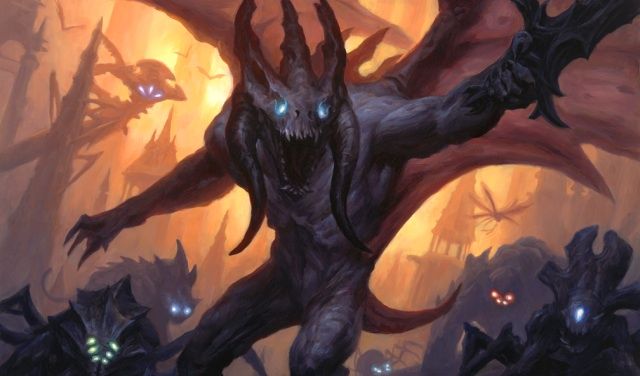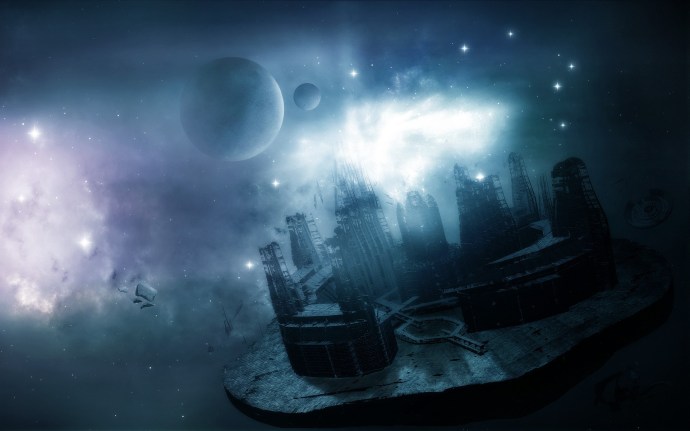Fetishes and Addictions
Many slaves to darkness are consumed by addictions and
perverted tastes. Unsavoury behaviour, drug addiction,
sadism, and masochism are just some of the horrible traits
common to the evil and perverse.
Cannibals: Cannibals are creatures that eat others of
their own kind. In the broader sense, cannibals may be
defined as creatures that eat other intelligent creatures for
whatever perverted pleasure they gain from it. Many creatures do this—dragons eat humans and other intelligent
creatures all the time—but usually they gain no more pleasure (and definitely less sustenance) from a human than they
do from a cow.
Cannibals gain pleasure, and in some cases power (see
the absorb mind and absorb strength spells in Chapter 6),
from eating others. Often cannibals consume foes that
they have defeated in battle, but sometimes they simply
murder their meals.
Diseases, many of which involve mental disorders, may
be transmitted through cannibalism. Eating particularly
foul creatures, such as trolls or fiends, can be very dangerous (see the blue guts disease in Chapter 2).
Masochism: Masochists are rarely at full hit points
because they continually inflict wounds upon themselves.
A masochist gets pleasure from feeling pain and sometimes
can’t tell the two sensations apart. Masochists wear jewellery
and devices that dig into their flesh with hooks and clamps,
they flagellate themselves with whips and barbed wires,
and they cut at their own bodies with knives and razors.
When encountered, a masochist has typically lost 1d3×10%
of his total hit points to self-inflicted wounds.
A masochist gains a +4 bonus on saving
throws against pain effects (such as a symbol of pain). Furthermore, if he takes damage equal to his character level in
a round, he gains a +1 bonus on attack and
damage rolls, skill checks, and saving throws for the next
round. Masochists often grin with a sickening glee when
struck in combat, and they make noises of ecstasy even as
they suffer terrible wounds.
Self-Mutilation: Like masochists, self-mutilators are fascinated by harming themselves. But the pain isn’t important to a self-mutilator; it’s the alteration and destruction of
his own flesh that fascinates him. Such characters turn the
destruction of their own bodies into a twisted sort of art, so
they are often covered in patterned scars. Sometimes this
ritual scarification is part of a religious ritual, but it’s just as
often self-inflicted for no other reason than a character’s
own sick and twisted desires.
Not all self-mutilators are motivated by masochism or art.
Some insert useful mundane or magic items into their
flesh. Tiny objects such as keys can be hidden not only in
body cavities, but also under the skin, thrust into self inflicted wounds. In some cases, a subdermal pouch forms
when such a wound heals around an object. Tattooing can
further disguise the scars of such insertions.
A self-mutilator always has 1d3–1×10% fewer hit points
than his or her normal maximum when encountered. Like
a masochist, a self-mutilator gains a +4 bonus
on any saving throw against pain effects.
Finally, a self-mutilator can choose to reduce his or her
hit point total by 10 points permanently to cover his or her
body in scabs and scars. This process toughens the flesh,
granting the character a +1 natural armor bonus.
Sadism: Sadists love to inflict pain. Generally, they hate
suffering pain themselves, but a few are sadomasochists,
who enjoy both giving and receiving pain. Foes gain a +1
bonus on Intimidate checks when they
threaten a sadist with physical harm, unless the sadist is
also a masochist.
If a sadist inflicts damage equal to her character level in a
round, she gains a +1 bonus on attack and
damage rolls, skill checks, and saving throws for the next
round. A sadist laughs and licks the spray of blood across
her face whenever she inflicts a grievous wound.
Psychopathy: Technically, a psychopath is anyone with a
severe mental disorder resulting in any egocentric and anti-social behaviour. For the purpose of the D&D game, however, a psychopath is someone who derives pleasure
from and in fact can become addicted to killing. Such
psychopaths slay for the sheer joy of it and to experience
the power-mad rush that accompanies the taking of
another’s life. Psychopaths who enjoy watching their victims beg for mercy are often sadists, and this type enjoys
inflicting pain before killing a victim. The type of psychopath who simply enjoys the feeling of ending a life is
interested only in death, and cries of mercy or pain only
annoy him.
Yet another type of psychopath is worth mentioning:
the rapist. This deplorable villain uses forced intercourse
as a means to attain power over others. Rapists can be
either gender, but almost all are male. A rapist is likely to
take his foes captive, particularly those of the gender he
is attracted to (although this is not necessarily the case,
because rape is about dominance and power, not true
sexual attraction)
Necrophilia: Among the foulest of fetishes, necrophilia
is the enjoyment of sex with the dead (or in some cases the
undead). Necrophiliacs are often members of a death cult,
servants of an undead deity such as Vecna, or followers of a
demon lord such as Orcus. Necrophiliacs may have sex
with corpses as part of a religious rite, as a sign of fealty to
a higher power, or simply for their own pleasure. Particularly vile individuals violate the bodies of their defeated
and slain enemies to give themselves a feeling of power
and superiority
Alcoholism/Drug Addiction: An individual addicted
to the use of a particular substance is prone to erratic, violent, and sometimes self-destructive behaviour. Some
addicted people reach a point at which they need the substance to function normally, so they sell off their material
possessions (and in some cases their family members) to
get the drugs they crave.
Drug addictions function much like diseases, and can be treatable with medicine and magics.
Bestiality: An individual who has the terrible fetish of
bestiality desires sex with creatures of a type, shape, or
intellect vastly different from his or her own. Sometimes
bestiality stems from a desire to have power over a creature
of limited intelligence, but more often this perversion is
caused by a deviance in attraction. Shape changers are the
most common culprits, although for some reason evil
dragons occasionally find themselves attracted to various
creatures other than their own kind. Thus, dragons often
learn spells or acquire magic items that allow them to take
different shapes. Fiends are willing to seduce or rape virtually any creature — practices that result in all manner of horrid half-fiends.
Vile Deities
In comparison with gods such as Erythnul and Vecna, the
deities described in this section are fairly minor, with only
small congregations and cults in their name. Most people
speak these deities’ names in fear, or not at all lest they
attract a dread god’s attention. Any or all of these deities can
be incorporated into an ongoing campaign.
Karran
Known primarily as the Beast God, Karaan is a monstrous
entity of savage lust and wanton destruction. Karaan is normally depicted as a hulking humanoid covered in scales, with
terrible claws and teeth. He resembles no specific animal
but has a predatory appearance.
Karaan represents the dark side of nature, and thus he is
the ally of Laneth and enemy of Sol. He is often revered in
association with Laneth, although his cults are much
more obscure. A few believe him to be related in some way
to Tiamat, though that dragon queen is not an actual new deity.
Karaan is the patron of lycanthropes and bestial creatures
such as bugbears, gnolls, Worgs, manticores, and some
sphinxes. His symbols are gnawed, broken bones and
bloody teeth. His favoured weapon is the greatclub (though
the bared claw and sharp tooth are just as favoured). The
domains he is associated with are Chaos, Destruction, and
Bestial. He is chaotic evil.
Clerics of Karaan are as bestial as the god they serve.
They despise civilization and love to destroy things—particularly objects fashioned through craftsmanship, for such
skills are alien to them. They wear furs, hides, or armor in
battle, or they wear nothing at all. Their hair is usually wild
and flowing, and they are given to incoherent screams and
grunts. They often undergo scarification as a part of their
rituals and file their teeth into points if they are not naturally sharp.
Karaan’s temples are places of natural power: secluded
glens, rocky outcroppings, and deep pits in the wilderness.
They are always full of the bones of their prey, sacrificial victims, and fallen enemies.

The Patient One
Waiting in the darkness, the Patient One—also known as
the Dark Watcher—is a strange and alien creature. Always
whispering secrets to itself, the Patient One waits until its
time comes, and then it strikes, destroying or consuming
everything in its path.
Although never actually pictured in its entirety, this god
is known to have many eyes, many mouths, and many
clawed arms around its bulbous body. The Patient One’s
symbol is a mouth surrounded by eyes, always done in dark
colours. The domains it is associated with are Evil, Darkness,
and Corruption, and its favoured weapon is the flail. The
Patient One is neutral evil.
Though some humanoids worship this strange being,
many more aberrations revere it. The Patient One’s temples are towers, often built on high hills in isolated areas.
With beholders and mind flayers as clerics and worshipers, the Patient One’s towers are also found underground. At the apex of each tower is a stone altar, carved to
appear as a mouth surrounded by eyes, stained dark red
with blood.

The Xammux
Not a single god, but an entity composed of at least six separate beings, the Xammux represents cold, analytical thinking taken to its extreme. The Xammux serves as the patron
of utter indifference and of delving into forbidden knowledge through exploration and experimentation.
The symbol of the Xammux is a pair of glistening, razor-sharp steel callipers. The Xammux is neutral evil. It is associated with the Evil, Knowledge, and Darkness domains. Its
favoured weapon is the short sword (which Xammux’s clerics
call a long knife).
Clerics of the Xammux are cold, uncaring beings who
are fascinated by knowledge. They think nothing of dissecting living creatures simply to learn more about their
biology. They place creatures in torture chambers to see
how long they can withstand terrible pain before their psyches crumble.
The temples of the Xammux are stark stone edifices filled
with traps and ingenious locks. White plaster often covers
the interior walls. Altars dedicated to the Xammux are
always made of polished steel.

Yeathan
God of the evil depths, master of the last gasping breath, and
lord of the deep darkness, Yeathan is a god of the sea. Once a
simple water deity, Yeathan gradually brooded on darker,
more mysterious matters until he became a neutral evil god
of all things foul and malevolent about the sea. Some sahuagin, a few kuo-toas, and a fair number of aboleths and their
scum servants revere Yeathan, who is largely unknown
among land-dwellers Yeathan’s temples are always submerged and unlighted,
filled with sharks, octopi, and strange denizens usually
found in only the deepest undersea trenches. His symbol is a
dark bluish-green spiral with a black centre. Yeathan is associated with the Evil, Destruction, and Water domains, and
his favoured weapon is the trident. Yeathan is neutral evil.
Clerics of Yeathan are quiet, brooding individuals with
quick tempers. They wear dark green and black. If they are
not native water-breathers, they are nevertheless accomplished swimmers.









Comments